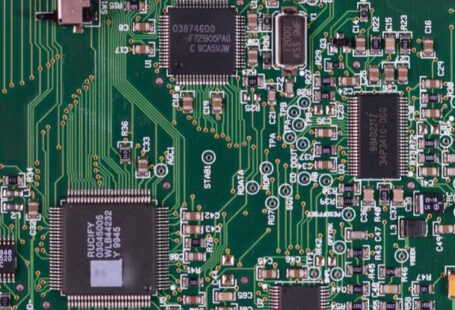Electrostatic discharge (ESD) can be a serious concern during maintenance procedures, as it can damage sensitive electronic components and equipment. Preventing ESD is essential to ensure the longevity and functionality of these devices. In this article, we will explore effective strategies to prevent electrostatic discharge during maintenance tasks.
Understanding Electrostatic Discharge
Before delving into prevention methods, it is crucial to understand what electrostatic discharge is and how it can impact electronic equipment. ESD occurs when two objects with different electrical charges come into contact or close proximity, resulting in a sudden flow of electricity between them. This discharge can cause irreparable damage to electronic components, leading to malfunctions or complete failure of the device.
Importance of ESD Prevention
Preventing electrostatic discharge is vital in the maintenance of electronic equipment to avoid costly repairs or replacements. By implementing proper ESD prevention measures, technicians can ensure the safety and integrity of sensitive components, ultimately prolonging the lifespan of the equipment.
ESD Prevention Strategies
1. Use ESD-Safe Tools and Equipment
When performing maintenance on electronic devices, it is essential to use tools and equipment that are specifically designed to prevent electrostatic discharge. ESD-safe tools, such as wrist straps, mats, and grounding cables, help to dissipate static electricity and prevent it from reaching sensitive components. By using these specialized tools, technicians can significantly reduce the risk of ESD damage.
2. Implement ESD Control Measures
In addition to using ESD-safe tools, implementing proper ESD control measures is crucial in preventing electrostatic discharge during maintenance tasks. This includes establishing an electrostatic protected area (EPA) where sensitive equipment can be safely handled. EPA should be equipped with grounded workstations, flooring, and seating to minimize the buildup of static electricity.
3. Wear ESD-Protective Clothing
Technicians should wear ESD-protective clothing, such as smocks and lab coats made from static-dissipative materials, to prevent electrostatic discharge during maintenance procedures. These garments help to reduce the generation and accumulation of static electricity, further minimizing the risk of ESD damage to electronic components.
4. Grounding Techniques
Proper grounding techniques are essential in preventing electrostatic discharge during maintenance tasks. Ensuring that all equipment, including the technician, is properly grounded helps to dissipate any static charges and prevent ESD incidents. Grounding cables and wrist straps should be securely connected to grounded surfaces to provide an effective path for static electricity to flow.
5. Avoid Working in High-Static Environments
To minimize the risk of electrostatic discharge, technicians should avoid working in high-static environments whenever possible. Areas with low humidity, synthetic carpets, and plastic surfaces are more prone to static buildup, increasing the likelihood of ESD incidents. By choosing a suitable work environment, technicians can reduce the risk of damaging electronic equipment due to static electricity.
6. Regular ESD Training
Lastly, providing regular ESD training to maintenance technicians is essential in promoting awareness and understanding of electrostatic discharge hazards. Training sessions should cover proper ESD prevention techniques, the importance of ESD-safe practices, and the potential consequences of ESD damage. By educating technicians on ESD risks and prevention strategies, organizations can ensure the safe handling of electronic equipment during maintenance procedures.
In Conclusion
Preventing electrostatic discharge during maintenance tasks is critical in safeguarding the integrity and functionality of electronic equipment. By implementing ESD prevention strategies such as using ESD-safe tools, establishing ESD control measures, wearing ESD-protective clothing, practicing proper grounding techniques, avoiding high-static environments, and providing regular ESD training, technicians can effectively reduce the risk of ESD damage. Prioritizing ESD prevention not only protects sensitive components but also contributes to the overall efficiency and reliability of maintenance operations.




